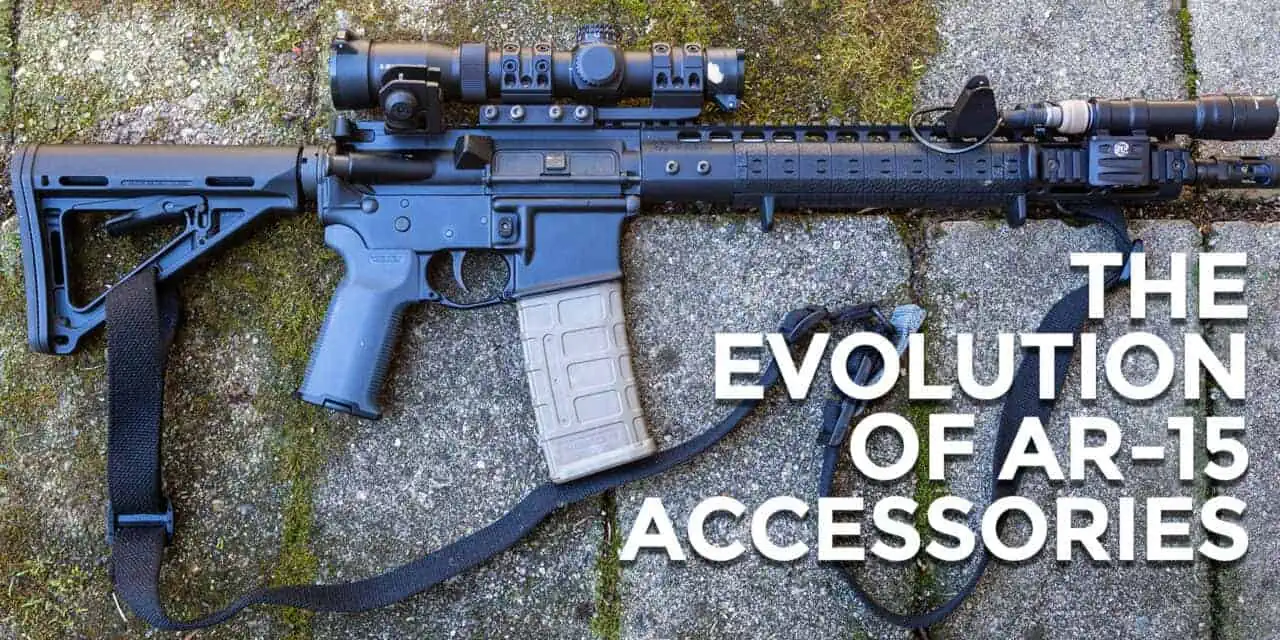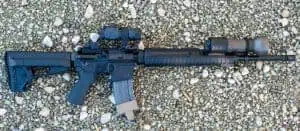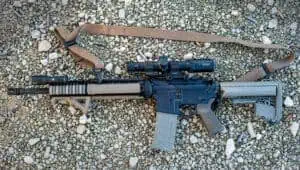The Evolution of AR-15 Accessories
The AR-15 (and its many variants) wasn’t always America’s most popular rifle, but it has been for the last twenty years or so. The AR-pattern carbines on the ranges of 2020 look completely different from the most popular models on gun store racks at the turn of the millennium. My friend David has quipped that he can guess the year an AR was built by looking at it. In my experience he’s rarely far off. Driven by changes in technology, the evolution of TTPs (Tactics, Techniques, and Procedures), and simple fashions in the marketplace, the typical appearance and accessories have changed dramatically since the days when customers were snatching them off the shelves as last minute preparation for Y2K.
An AR-15 For Y2k
Back in the year 2000…and the first few years thereafter…the appearance of AR carbines was dictated as much by law as fashion. Bayonet lugs were a no-go on new-production guns thanks to federal legislation that wouldn’t sunset until 2004. Likewise, flash-hiders were verboten for the same reason.
A popular configuration was the so-called “M4gery,” with a pinned collapsible stock and a muzzle brake that looked like an A2 birdcage flash hider, at least from a side view. Had to have those oval-section double heat shield handguards, too, if you wanted to be “clone correct”!
While flat-top configurations were becoming more common, they almost always were sold with a detachable carry handle attached. The old guard, personified by Clint Smith and his protégé, Tiger McKee, hadn’t sworn off iron sights. The more forward-thinking were figuring out ways to attach incandescent lights, and Surefire began making deep inroads into the WML (Weapon Mounted Light) market beyond SWAT and Special Operations Forces (although it’s easy to find pictures of Maglites hose-clamped to M16A2 handguards as late as the early days of OIF).
Sling Shots
Slings were a bewildering variety of simple carry straps, bondage-gear-complex three-point slings, and the classic single-point. Vertical foregrips, for those who had them, tended to be big, honking things you could get a fistful of. For folks who could legally run collapsible stocks, the all-aluminum ACE was popular.
After the so-called “Assault Weapons Ban” sunset and 2005 rolled past on the calendar, more data began coming back from the sandbox on the efficacy of optics on a real-world carbine. These were the years of Peak EOTech & ACOG, as well as the proliferation of quad rail forends. These giant cheese-grater rail farms offered more real estate for accessories, like the early weapon-mounted lights.
Mid-length gas systems became more popular toward the end of the decade, accompanied by long, free-floated handguards — sometimes with quad rails but increasingly without. Non-folding fixed BUIS served as a backup to battery-operated optics, although that faded.
With collapsible stocks back on the menu, VLTOR stocks were popular in the first part of the period, but a company that made little pull tabs for magazines branched out into the stock business and rapidly eclipsed them.
What Today’s AR-15 Accessories Look Like
As the calendar pages flip past 2015, the AR carbine and AR-15 accessories start to assume their current form. Retro builds are now where you usually see fixed front sight towers, and quad rails and bulky free-floats look quaint. Slim handguards, usually M-LOK except for the occasional Keymod diehard, feature hand stops. Remote switches for lights have become more common than ever.
On the optics front, the rise of 3 Gun competition means that a new crop of rugged LPV (Low Power Variable) magnifying scopes have taken a large chunk of the market away from non-magnifying red dots. Another development from carbine competition, offset irons or mini red dots to serve as short range supplements to the magnifying optic, have increased in popularity in the wider world. Finally, with night vision becoming more affordable, higher mounts to allow comfortable use NVGs and armor have increased in popularity.
Given all the advances of the last twenty years, one can only hope that the next twenty bring as many or more positive developments for America’s rifle.





